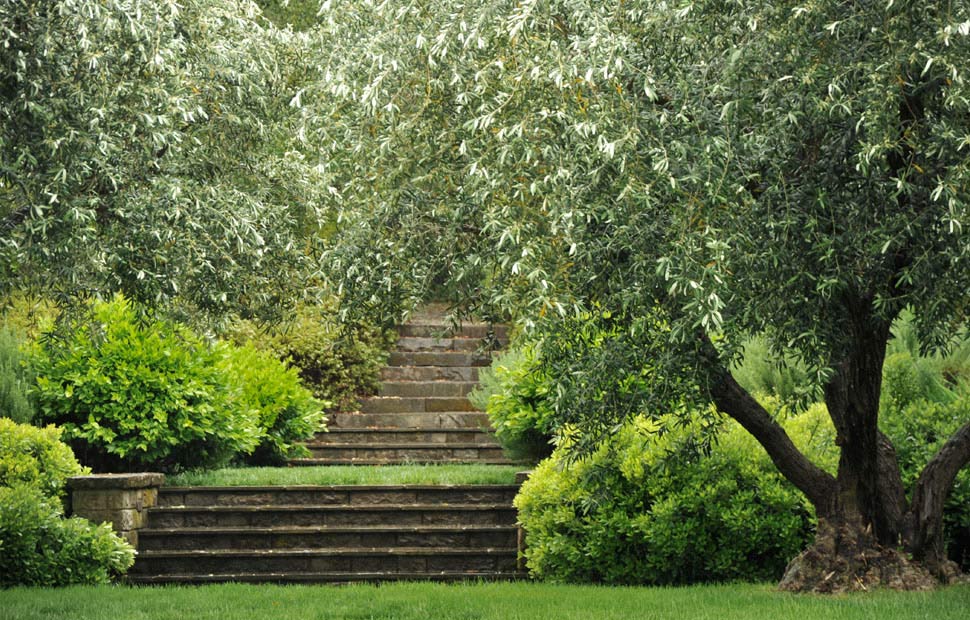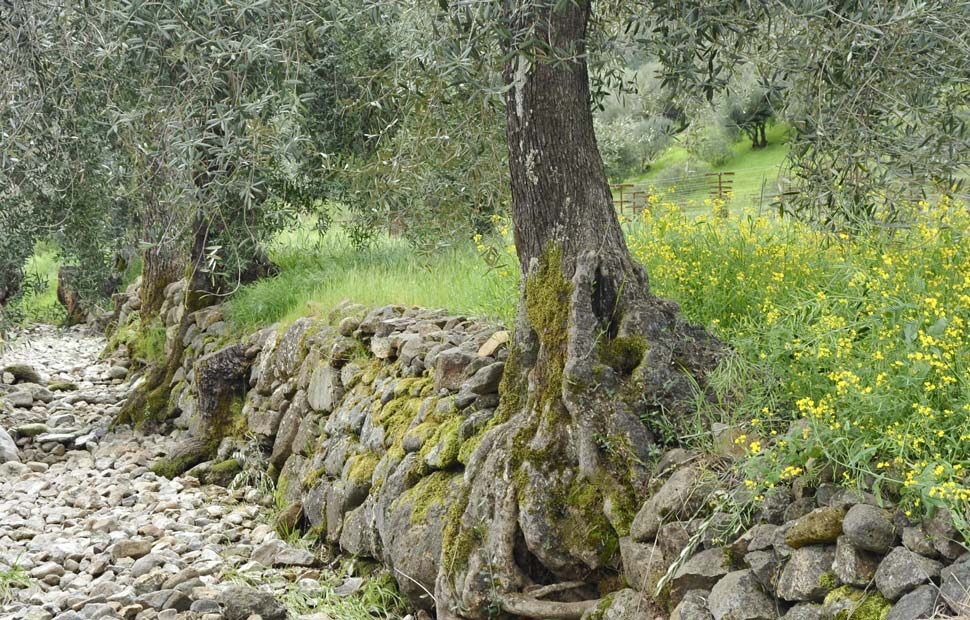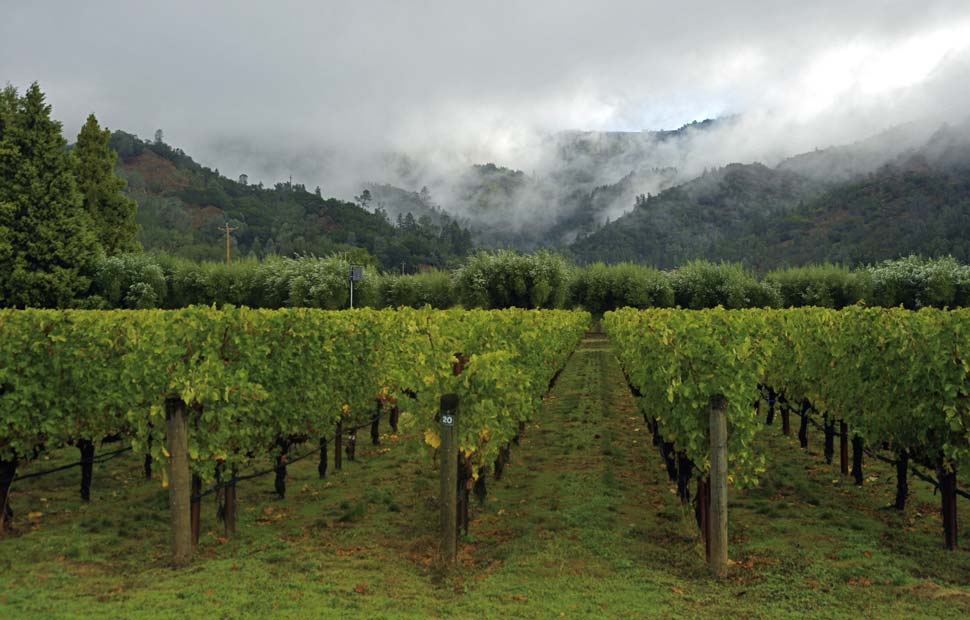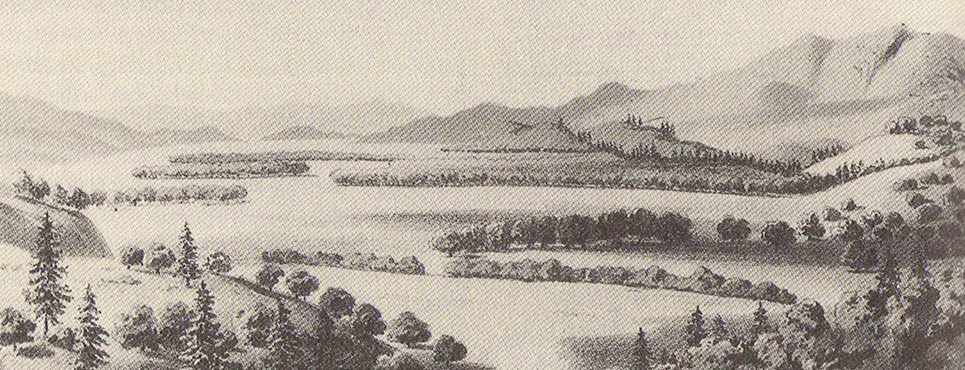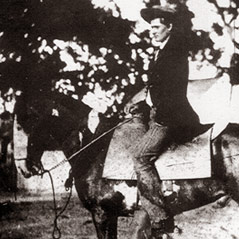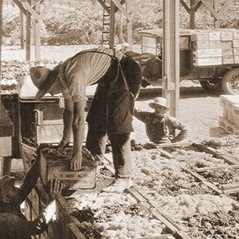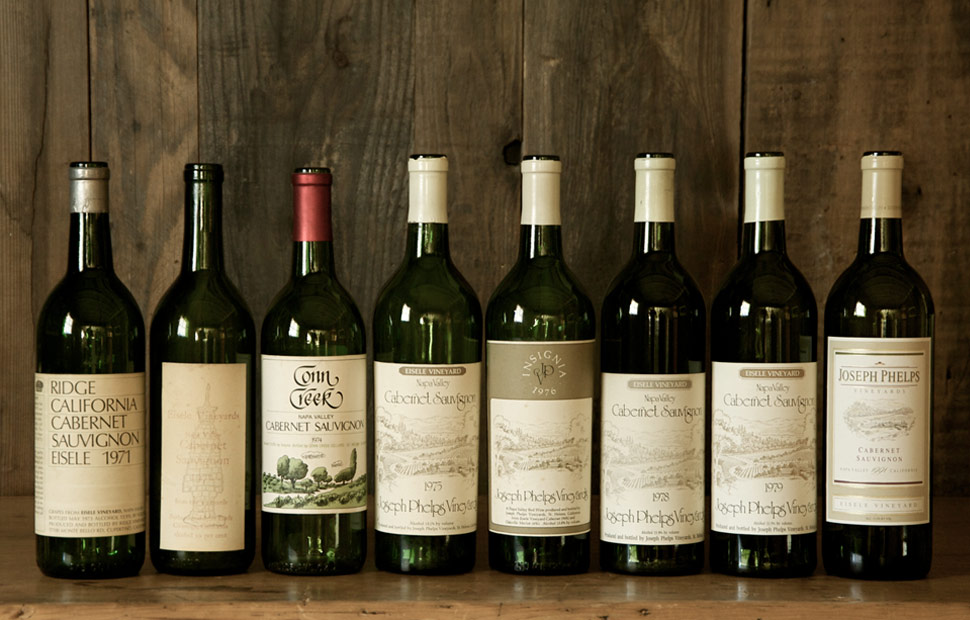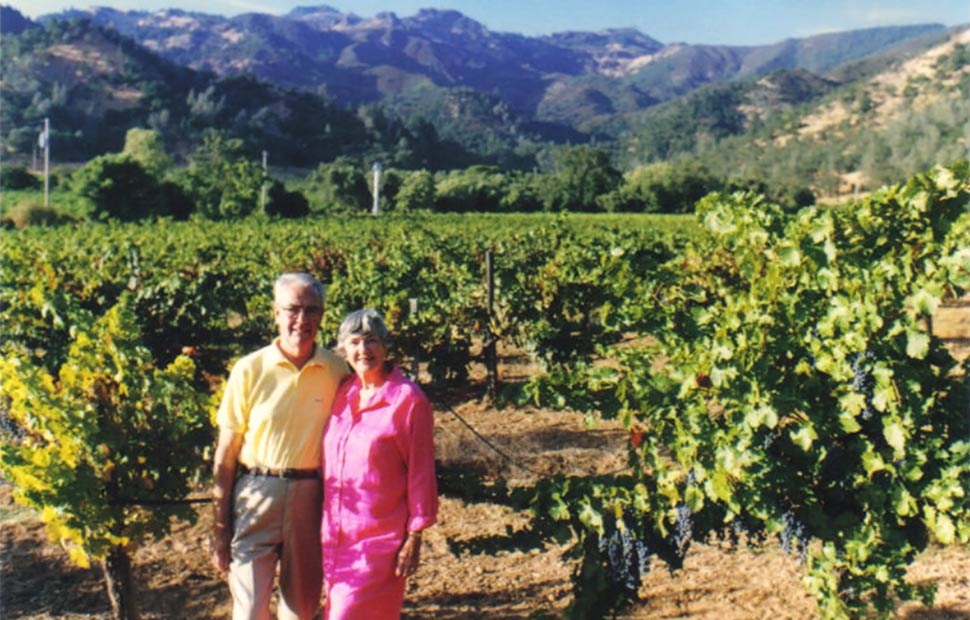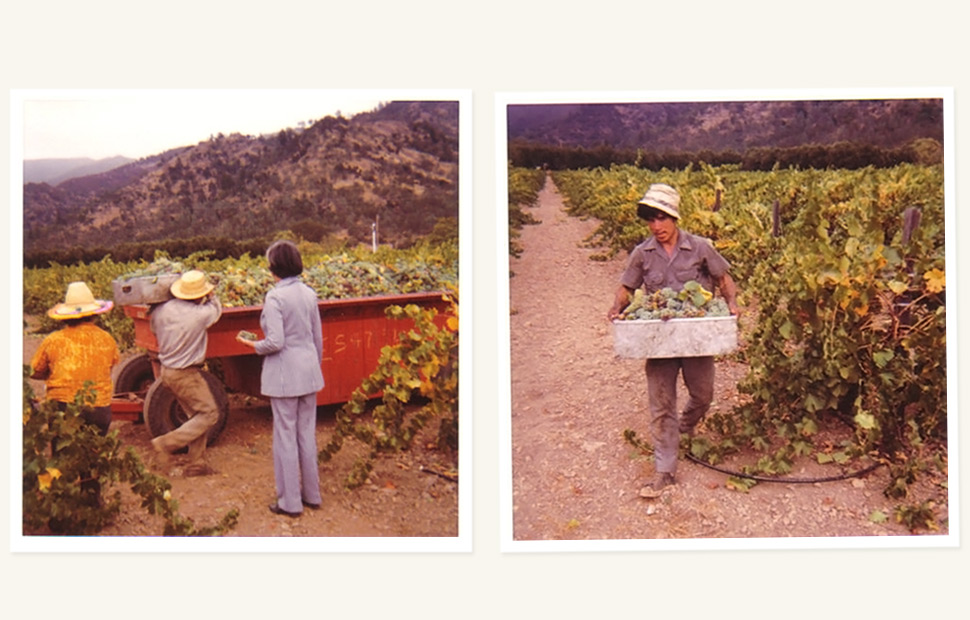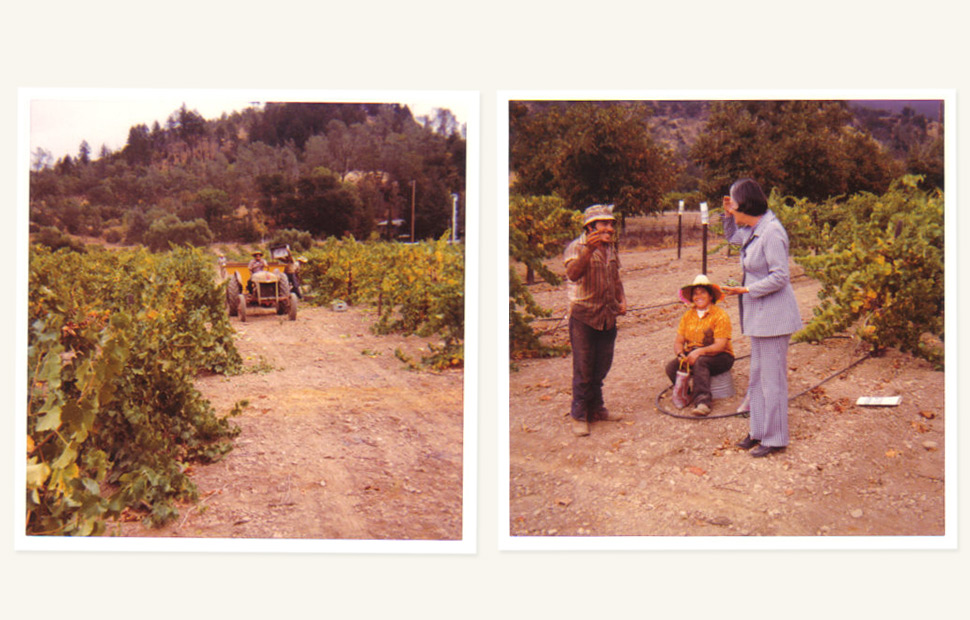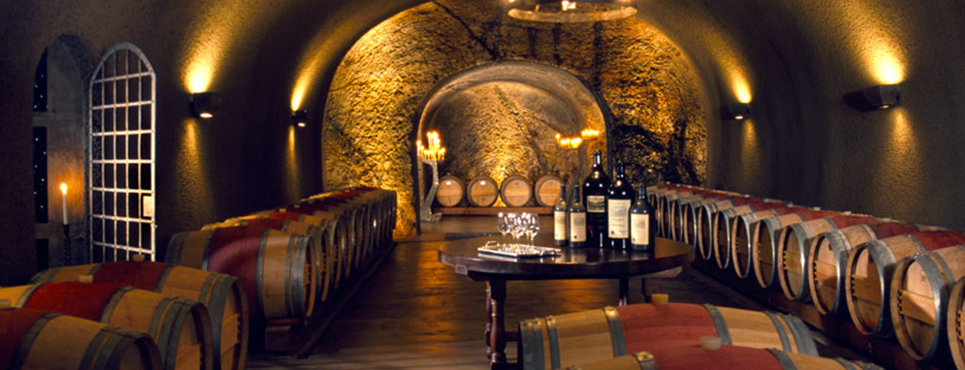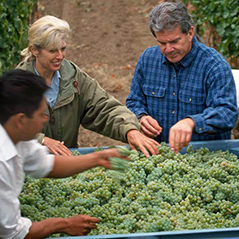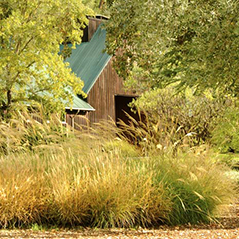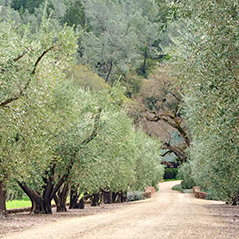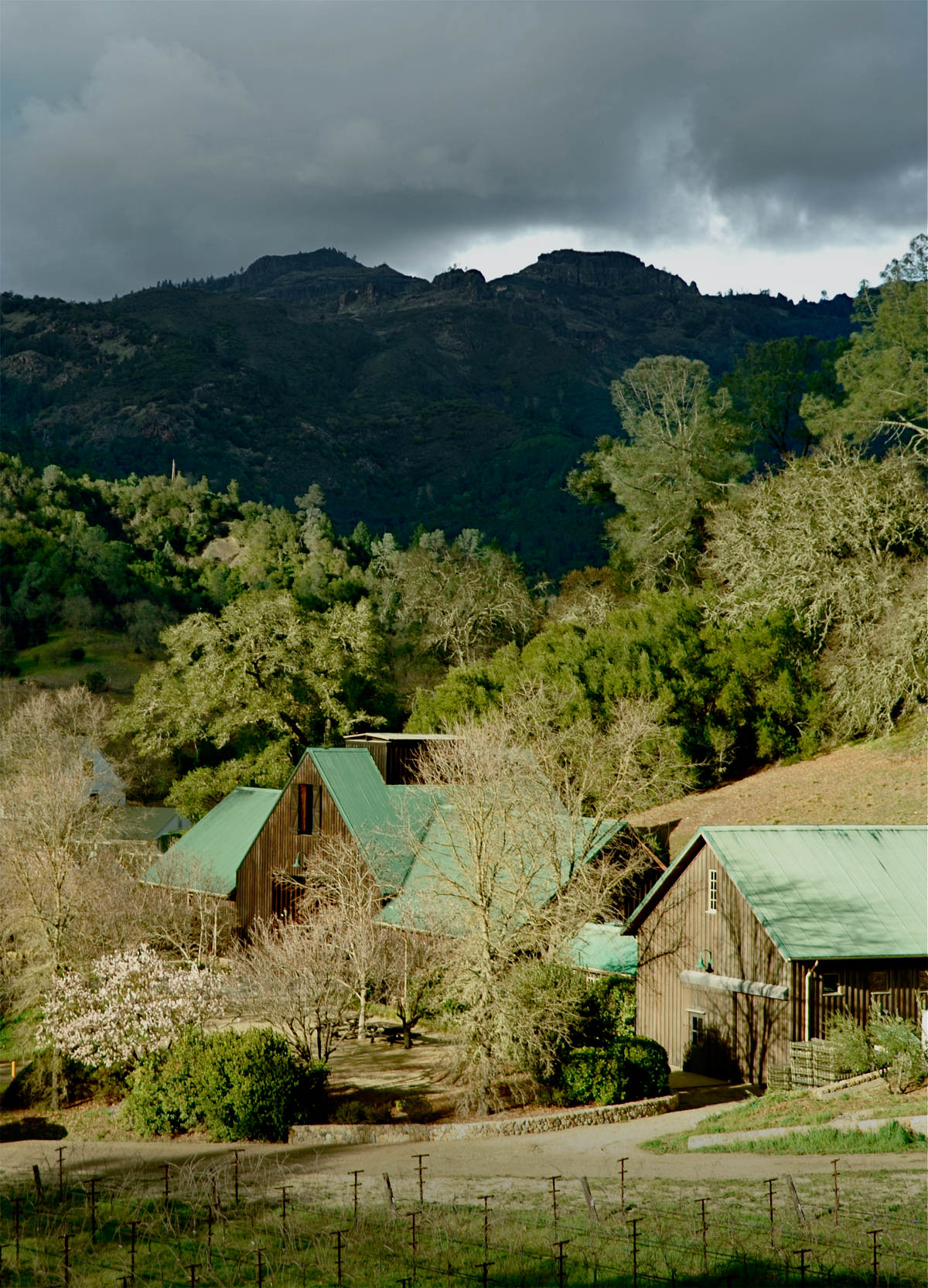
Our Vision
To produce organically and biodynamically grown fruit and make singular wines of the highest caliber. To express the uniqueness of the precious resource that is Eisele Vineyard.
In wine, there is nothing so immutable as the land. Vintages offer variation, as do winemakers and proprietors. Mother Nature is capricious, always wanting the last word. But the land is a constant, its geology and composition immovable. At the heart of every great wine is a piece of land like no other.
First planted to vines in the 1880s, Eisele Vineyard sits in the northeast Napa Valley, just east of Calistoga at the base of the Palisades Mountain range. Farmed organically since 1998 and biodynamically since 2000, the site has been principally dedicated to Cabernet Sauvignon for the last fifty years. Beginning with the inaugural release bearing the Eisele name in 1971, this iconic vineyard has received
consistent recognition for possessing one of the great terroirs of Napa Valley. The wines invariably express the exceptional depth, elegance and longevity which are hallmarks of the Eisele Vineyard.
Our vision is nothing less than to re-embrace the long history of Eisele Vineyard while realizing the full potential of this remarkable estate. Preserving and expanding upon the vineyard’s distinguished legacy in Napa Valley — and among the great winegrowing estates of the world — is both an honor and our aspiration. Through intellectual rigor, humility, and with the utmost respect for the land, our aim is to make wines that speak of the Eisele Vineyard in the most authentic way possible.
Estate History
The history of the 162-acre Estate reaches back to a time before grapes began to dominate the Napa Valley, and mirrors the events that shaped this extraordinary grape growing region.
The earliest stewards of what is now the Eisele Vineyard were the Wappo, native gardeners and land conservationists who until the early 1800s maintained a delicate balance among wildlife, vegetation, and human occupation.
By 1841 the Eisele lands had become part of the 18,000-acre Mexican land grant, Rancho Carne Humana, awarded to Edward Turner Bale by his uncle-in-law, General Mariano G. Vallejo. Bale continued to graze cattle and horses on the land; he also cultivated grapes and grew vast quantities of wheat, building a large gristmill that is said to be one of the first meeting places of the Anglo settlers who staged the Bear Flag Revolt.
In the early 1880s Jackson G. Randall, one of Napa Valley’s pioneer viticulturists, and his neighbor Charles Nathan Pickett, one of the Valley’s largest wine producers, were the first to plant grapes on what is now Eisele Vineyard. Pickett and his family retained this vineyard land until the Second World War.
From the 1880s to the late 1960s the lands remained under continuous grape cultivation, surviving successive owners as well as the financial catastrophes of phylloxera, Prohibition and the Great Depression. During these years the Napa Valley wine industry languished but vines persisted.
The Eisele Years
In 1969, Milton and Barbara Eisele purchased the 162-acre property, naming it the Eisele Vineyard. Over their 20-plus years of ownership, they established the site as one of the finest sources for Cabernet Sauvignon grapes in the Napa Valley.
Determined not to languish in retirement, Milton and Barbara Eisele began a new career as grapegrowers in their 60s. In a prescient move that altered the course of this special place, the Eiseles offered their grapes to Paul Draper, winemaker of Ridge Vineyards. In 1971 Draper produced the first Eisele Vineyard Cabernet Sauvignon, one of the first vineyard-designated wines in California. This landmark wine is still beautiful after more than four decades in bottle, and is widely considered to be one of the finest wines ever produced in the Napa Valley.
The second vineyard-designated Eisele Cabernet was produced by Conn Creek Winery in 1974, to equal acclaim and with equal longevity, and from 1975 to 1991, Napa Valley wine visionary Joseph Phelps continued the tradition, producing what would become a long line of legendary Cabernets from the Eisele Vineyard. The 1991 vintage yielded two significant Eisele Vineyard Cabernets: the final Phelps bottling from the property, and the first Estate Cabernet Sauvignon.
The Araujo Years
In 1990 Daphne and Bart Araujo bought the celebrated land that had nurtured some of the earliest grapes in Napa Valley.
During their twenty-three years of stewardship of the Eisele Vineyard, the Araujos were committed to maintaining links with Napa Valley’s rural history while building on the Eisele’s accomplishments. Taking an exceptional piece of land for growing Cabernet Sauvignon, the Araujos created an authentic winegrowing estate. They replanted the vines, introduced organic farming and became among the first Napa Valley vintners to embrace the principles of biodynamic farming. They re-designed the estate grounds and safeguarded a diverse eco-system to ensure the health of the land.
The Araujos also constructed the first winery on the property, including temperature-controlled caves, tastefully
integrating the architecture with the natural and historic landscape. And they produced outstanding wines, exquisite Cabernet Sauvignons that secured a world-class reputation for the Eisele Vineyard and created a touchstone for Napa Valley.
In 1990 the Araujos also identified a small number of Syrah vines within a Cabernet block dating from 1978 grafts, and from these vines they developed a dedicated Syrah program. Additionally, they brought Sauvignon Blanc to an east-facing slope of the Eisele Vineyard. The Araujo’s contribution to this property – its beauty and vitality, its wines and its stature – cannot be overstated. Their work will speak through this place as long as vines are in the ground.
Artemis Domaines & the Pinault Family
When we arrived at Araujo Estate in 2013, forty vintages had already carried the Eisele Vineyard designation. We admire and respect these wines immensely. Their exceptional balance, elegance and restraint spoke to us, and we found the expression of terroir to be pure, honest and unmistakable. We were captivated and humbled, knowing that giving voice to this place would be both a privilege and a challenge.
As we continue to write the history of Eisele Vineyard, we build on the spirit of stewardship that defines its past. Our journey here is an exploration, a quest to understand this vineyard more deeply — its geologic construct, the variations in terroir, and the nature of its ancient soils. Changes, when considered, are only in service to letting the terroir speak more clearly. To this work, our experienced team brings creativity, curiosity, and an unflagging passion for excellence.

